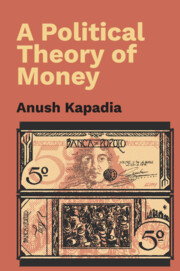2 - The Money Fetish: Making Promises into Things
Published online by Cambridge University Press: 14 September 2023
Summary
In the last chapter, we saw that credit is not epiphenomenal but constitutive of political and economic life. The economist's fiction of a barter economy ‘veiled’ by money leads to a thing-based monetary science of quantities, velocities and value from scarcity. But a monetary economy is ontologically distinct, a social entity that requires a social science.
Yet the economist's intuition is not entirely misguided: money does in fact behave like a thing with value, a commodity. The question is how it does that, and why different money-things have different values.
Money is the outcome of an institutional process by which creditary promises acquire the attributes of things, commodities with value. This of course recalls Marx's idea of the commodity fetish whereby social relations between people take the necessary form of appearance of relations between things because the social element, ‘value’, being abstract cannot be perceived as such. With money, this process occurs through a particular kind of institutionalisation, ‘mutualisation’, a ubiquitous socio-economic relation which is at the core of the social technology of banking—namely the business of dealing in credit. The relation with bank money especially is obscured; given its form of mutualisation, we never encounter it as such.
The magic of credit, and the outcome of mutualisation, is the functional thingification of promises: promises remain promises, but they can move about the world like value-bearing things. So successful is this process that common sense takes money to be a fiat-thing, a token rather than a credit-promise. Mutualisation is the variable process of making promises operate as things. Erroneous as an account of money's essence, ‘fiat’ nevertheless refracts the institutionalised source of money's power.
One of the main ways in which a money fetish is created in the credit system comes from hierarchy itself. One level's credit (inside money) is simultaneously another's money (outside money), and outside-ness confers thing-ness. We consider this first before outlining four further elements of fetishism: ‘lending to the bank’ appearing as ‘depositing’, system-wide flows of liquidity appearing as localised stocks of cash, and credit creation appearing as dishoarding cash. Finally, we consider how the ‘exchange rate’ of 1 between bank money and central-bank money, the par constraint, amplifies the money fetish. We conclude by discussing the irony of the cryptocurrency enterprise attempting to copy the fetishised projection of the credit system by trying and failing to make bare tokens work as money.
- Type
- Chapter
- Information
- A Political Theory of Money , pp. 25 - 40Publisher: Cambridge University PressPrint publication year: 2024



